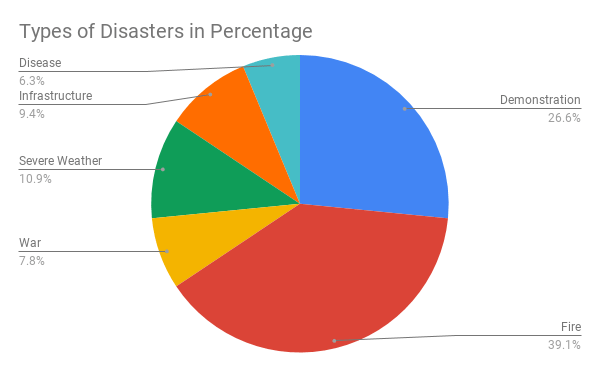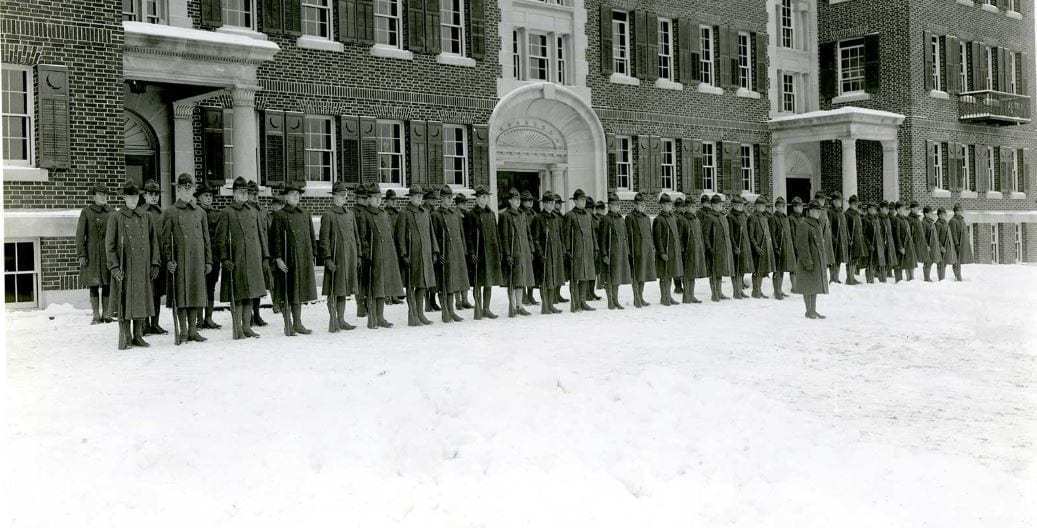Key Findings
Despite its rural location and peaceful campus scene, Amherst College has been constantly undergoing varieties of disasters, borne of natural and societal causes.

- Five types of disaster distribute unevenly
in terms of frequency of occurrence. - Fire incidents contribute to approximately 40% of the disasters,
the most among types. - Over a quarter of disasters come from demonstrations,
marking the history of campus activism. - Only approx. 10% of disasters come from severe weather.
- Over 40% of disasters are borne of human causes
(Wars, Demonstrations, and Infrastructures).
Disasters overlap and superimpose on each other.

- There isn’t a single decade in Amherst history
that is immune from any disasters since 1850. - Disasters of the same type could take place consecutively.
- Natural and human-made disasters could take place simultaneously.
- More disasters cluster in Spring and Fall,
most likely subject to the academic calendar. - There is no demonstrated cluster in the dates disasters take place.
Disasters catalyze institutional changes; changes prepare for new disasters.
- Frequent fire on Fraternity Houses was used in the argument for abolishing fraternities;
- Reconstruction of fireproof walls in student dorms was proposed after the Fire of Delta Kappa Epsilon house;
- The curriculum was revised during World War I to prepare students of survival and battle skills;
- Morning assemblies were abolished after waves of student protests on the rules;
- Walker Hall was reconstructed after the first fire, but razed to make place for the current Robert Frost Library;
- Classes were taught remotely as the COVID-19 pandemic loomed danger to the health of the campus community.
I have heard “crisis” described as a pivotal moment in an organization or institution’s life after which it will never be the same– almost like an inflection point. Every crisis is an opportunity to either seize the moment, and come back stronger and more resilient than before with the organization’s values demonstrated and reinforced; or, to come back weaker with its true self revealed and as a lesser version of its old self. They all depend on management and leadership. Even scandal can result in an organization coming out stronger and better after it has weathered the crisis if decisive action and transparency are the management principles applied.
Matthew Hart, Director of Emergency Management of Amherst College

You must be logged in to post a comment.